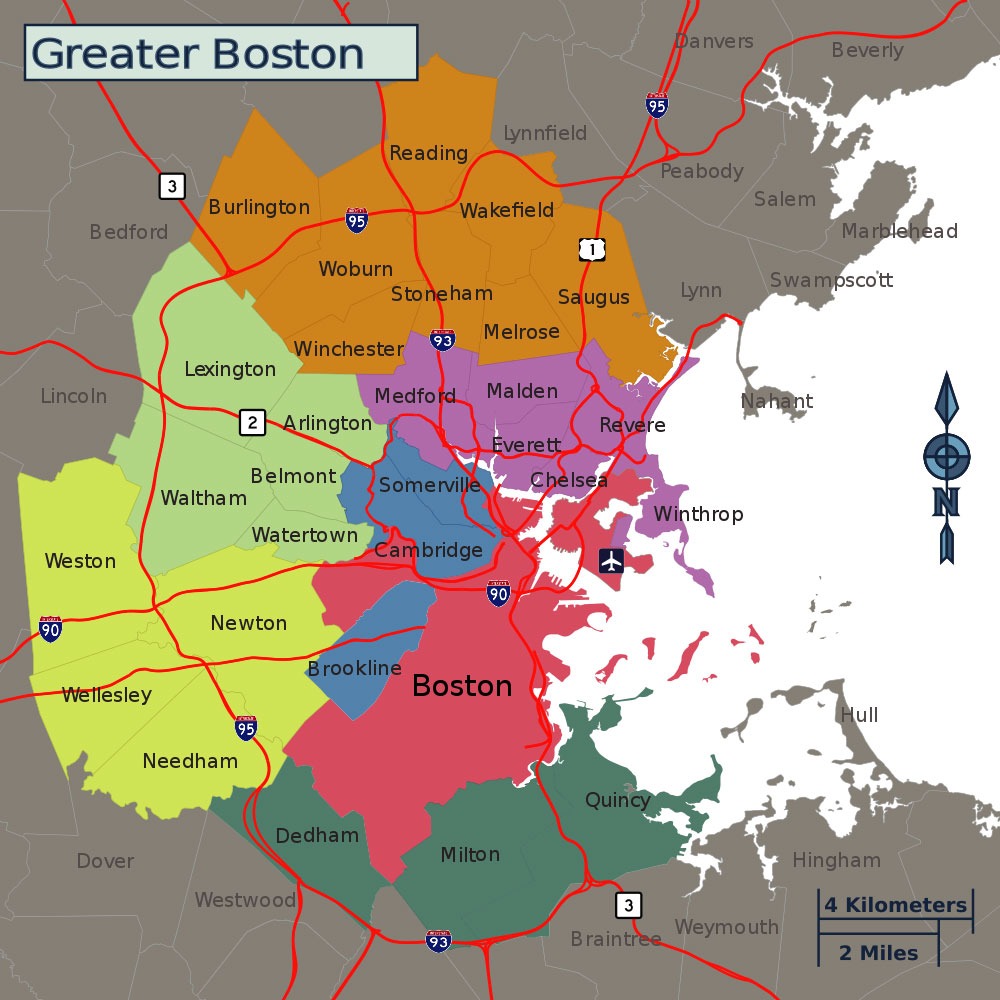
June 26, 2019; WGBH and CityLab
The Boston Foundation issued its Greater Boston Housing Report Card earlier this week. After the Foundation collected and analyzed data about the availability and affordability of housing in the Greater Boston community, it found one clear message. If the goal is to have a community that doesn’t discriminate based on color or wealth, one that provides sufficient housing in all sizes, shapes, and costs, then there’s no need to look beyond one’s backyard for answers. Local decisions about the type of housing that can be built, they concluded, are the biggest barrier to creating an open and fair Greater Boston.
The study found that the Boston area, like many other parts of the country, has a growing economy whose benefits are not being shared equally among its residents.
Despite low unemployment, impressive job growth, and booming high-wage sectors, home prices in the Boston metropolitan area are very expensive in relation to the income of most of its workforce. Although this may not hold true for the highest wage earners, a closer look at the economic experience of middle- and lower-income earners tells us a different story about the region’s economic prosperity…
In Greater Boston inequality is widening, housing prices are increasing rapidly, production of new housing is insufficient, and there are not enough public funds to meet the need for subsidized housing. As a result, the most vulnerable residents face uncertainty and instability in the housing market.
Seeing the challenge as one that must be solved regionally, rather than outward from the city center, according to WGBH, the Foundation for the first time directly challenged local communities for the “apparent unwillingness on the part of many cities and towns to participate in developing the diversity of housing we need for our region’s growing population.”
The report calls out “home rule” powers as a major barrier to solving housing and equity problems. Too often, home rule “effectively bans anything but the kind of stand-alone single-family houses that characterize wealthier suburbs, which, in many cases, only upper-middle-class and upper-class residents can afford.”
Sign up for our free newsletters
Subscribe to NPQ's newsletters to have our top stories delivered directly to your inbox.
By signing up, you agree to our privacy policy and terms of use, and to receive messages from NPQ and our partners.
The Foundation’s CEO, Paul Grogan, says their assessment shows that home rule powers don’t just ensure economic segregation and a lack of quality affordable housing; they let racial discrimination remain in place in the region.
The problems that the Boston Foundation spotlights can be found in similar communities around the nation. According to CityLab:
Minneapolis just eliminated single-family zoning within city limits as a means of increasing the supply of multifamily housing and combating the legacy of racial segregation. Seattle upzoned a few dozen neighborhoods to ease its tech-saturated affordability crisis; California has tried (and so far failed) to push a broad zoning reform bill, SB 50, statewide. Democratic 2020 candidates like Cory Booker, Kamala Harris, and Elizabeth Warren have all adopted different variations on the theme in their presidential campaign platforms.
The outcry arising from these growing pains has even reached the ears of the White House. On Tuesday, earlier this week, President Trump signed an executive order creating the White House Council on Eliminating Barriers to Affordable Housing Development, charged to “address, reduce, and remove the multitude of overly burdensome regulatory barriers that artificially raise the cost of housing development and help to cause the lack of housing supply.”
The Boston Foundation did not issue a set of specific recommendations that would loosen the stranglehold that local governments have on housing development. Even the White House was only ready to study the problem. It turns out that recognizing that restrictive zoning lies at the heart of the affordable housing problem does not make the political hurdles easier to overcome. “Not In My Back Yard” is a powerful rallying cry when local officials face local voters worried about property values and “undesirable neighbors.”
Henry Kraemer, the housing fellow at Data for Progress, captured the fear that rather than open the market, their efforts will keep low-cost housing in its place. “They want to be able to say they’re doing something on housing. If something did happen, my guess would be they’d look into packing a bunch of new density into already low-income communities…call it ‘removing barriers.’”
Can those willing to say “yes, in my back yard” overpower the NIMBY faction? As the Boston Foundation’s report is digested, and local and regional government bodies react, the people of Metro Boston will soon find out. Nationally, the new White House council will do its work and issue findings of its own. In the meantime, affordable housing remains in ever-shorter supply.—Martin Levine













